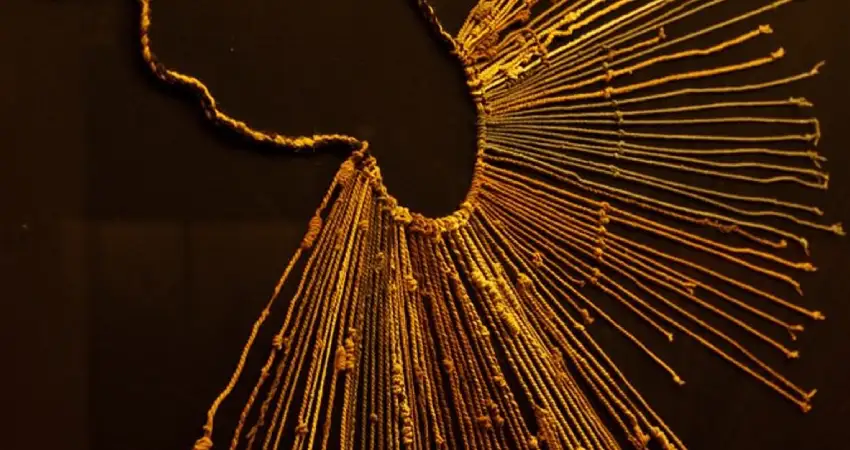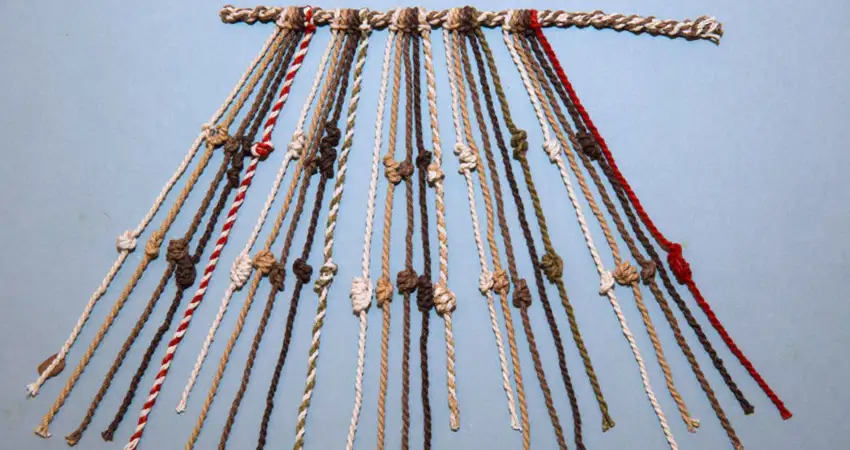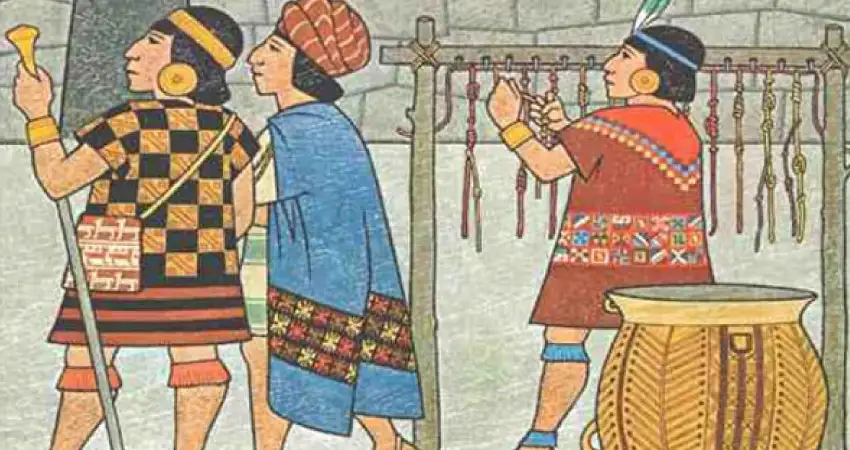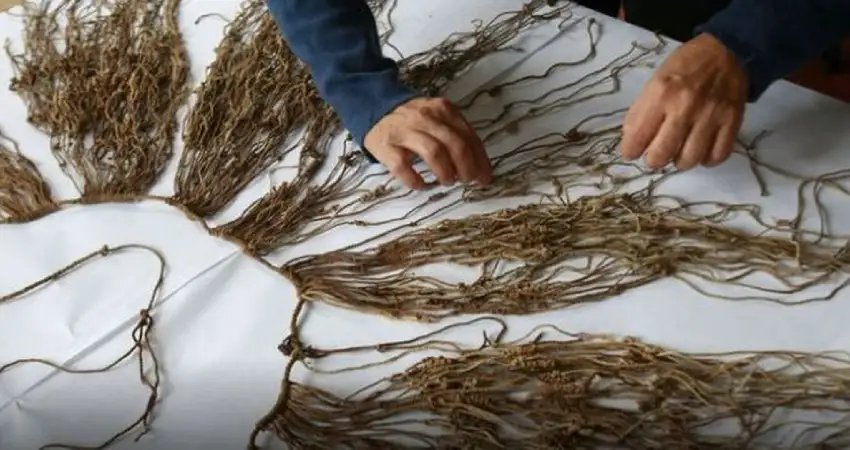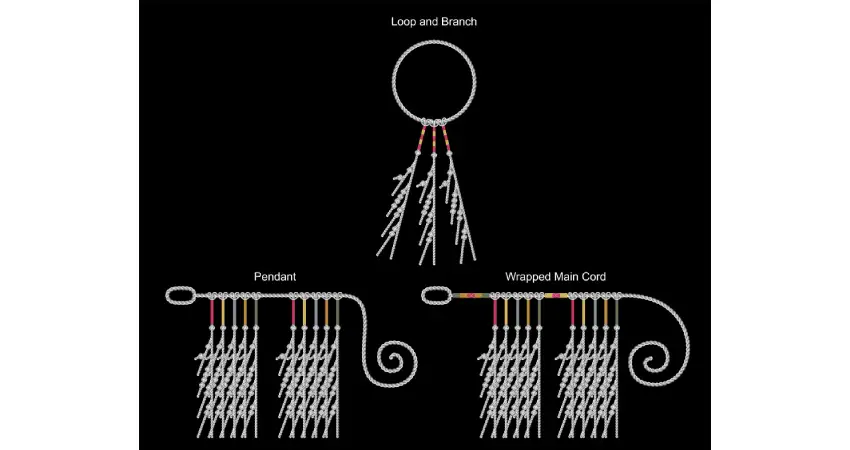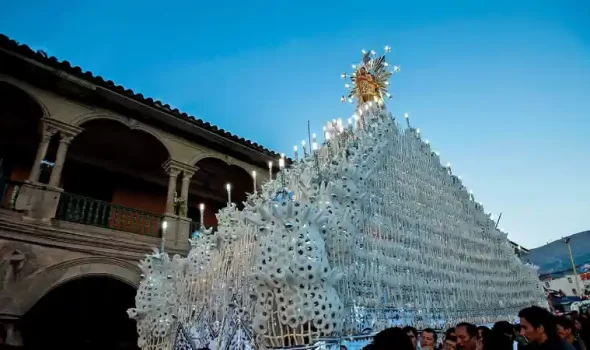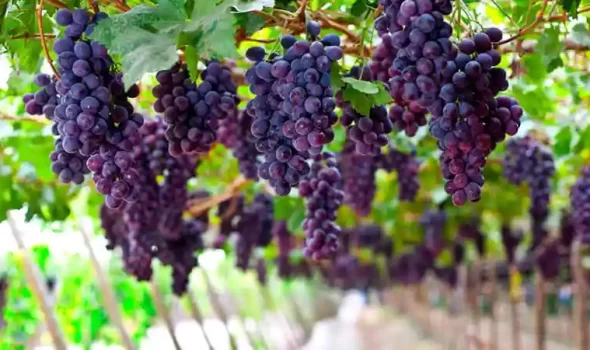1.- THE ORIGINS OF THE QUIPU PERU
According to the history of the Quipu Peru, the Inca culture was the last to use this instrument but its elaboration is much older, according to its historical record dates even from 2600 BC through various cultures until it finally stagnated in the year 1532. During this period there were important characters in history such as the Inca Garcilaso De la Vega who mentioned the Inca messengers also known as Chaskis, who carried messages from one place to another through the Inca trail also known as Qapaq Ñan. They also carried the Quipu Peru for this reason it is given the meaning of numerical account or accounting purpose.
Finally at the time in which the Spaniards arrived and established their culture and Spanish writing made the biggest purge of idolatries and Andean beliefs, within this also includes the massive destruction of unique items, the Quipu Peru was one of the main ones they tried to destroy, currently it is known that only about 600 units of Quipu Peru are kept in good condition and preserved, most are in museums and places of preservation. Over time they were collected from tombs, huacas and in some cases from Andean communities where they were preserved as a treasure, although clearly today no one knows how to interpret a Quipu Peru accurately, this practice was lost over time.
2.- MEANING OF THE QUIPU PERU
The Quipu Peru comes from a Quechua word that is also mentioned as Quipo:
Translated means “Knot”.
Actually its interpretation process is still ongoing and what is known so far is that the information was stored or recorded in the color of the cord, the extension, the type of knot and its location, as well as the direction of the knot twist.
Each cord of the Quipu Peru is tied in a combination of colors and sometimes has individual strands of cotton or wool that are dyed in different ways. Of course, at the top they are all attached to a horizontal rope, but this is not the only model as multiple alternate knots have also been elaborated, but all start from the horizontal base.
| “Travel is a good way to learn and overcome fears.” |
3.- WHO COULD INTERPRET THE QUIPU PERU
There are records in the Spanish chronicles that mention how a man was able to read and interpret the Quipu Peru, this person was called Quipucamayoq. In the same way there were also Andean priests who learned the interpretation of the complex knots of the Quipu Peru. Knowing that only a few people were able to interpret the Quipu Peru, it is deduced that this was an exclusive knowledge that was not shared with all the people, perhaps this is the reason why many of the customs of the people were transmitted orally.
It is also interpreted that today a similarity to the Quipucamayoq are the Counters, although another interpretation over time was that they were secret agents with crucial information of the regime that ruled at that time. This would be more coherent taking into account that this knowledge was restricted only to some people close to the nobility.
4.- THE MECHANICS OF THE QUIPU PERU
A Quipu Peru is elaborated in the same way always, a horizontal base from where ropes are linked with knots however what varies is the material with which it is elaborated. Mainly they were elaborated with llama or alpaca wool which were used with natural elements such as cochineal, coca leaf, citrus and other elements. In some specimens it could be seen how a fine gold thread ran along the ends of the ties, making beads in a positional system of decimal bases.
5.- HOW TO READ A QUIPHU PERU?
The key to decipher more about the Quipu Peru is really to know how to read them, this really is a true sample of art and fortunately although not completely it is known that it is not so complicated. There are 3 types of knots and each one represents the amount (expressed in decimals), in this way the closer it is to the base, its value increases and the farther away its value is less.
- Individual knots can be Ten Thousand, Thousand, Hundreds and Tens.
- Long knots depend on the number of turns of the rope in the knot.
- Knots in “eight” mean only one.
Thus if a rope is found with a group of 2 individual knots (very close to the base) with a space followed by a long knot with 5 turns we can consider it as number 25. On the other hand if in a rope there is a group of 4 individual knots then a space and an extra group of 3 individual knots and finally 3 knots in the form of “eight” then it is considered as number 433.
6.- TYPES OF QUIPU PERU
It was thanks to the story told by the chronicler Guaman Poma de Ayala that many things made sense, as he explains everything with realistic graphics of how the facts happened, within this is how to interpret a Quipu Peru in addition to the differences between their colors, positions and as its use was for tracking numbers and information, so far it is known that there were 3 types of Quipu Peru:
- Beads: It was the most classic type of Quipu Peru, it was what allowed the Quiphucamayoq to have control over the accounts.
- Narrative: This Quipu Peru had more than one information, besides the numbers, it is said that they could also hide important events, stories and even battle tactics.
- Control: It is known that the form of control of the Inca government over the Andean communities was that they provided food, resources and protection in exchange for their loyalty and tribute, for this a means of control was needed and this Quipu Peru served for that.
7.- THE LAST SURVIVING QHIPUS
With the passage of time the use of the Quipu Peru was disappearing in the same way its understanding, to the point that nowadays they are scarce and very valuable. During the year 1911 when Hiram Bingham arrived for the first time to Machu Picchu however even for its importance this place did not contain a single Quipu Peru. Shortly after the civil war in the Inca culture between Huascar and Atahuallpa, the latter is the one who took care of erasing all records of his brother and as a result also made a massive destruction of many Quipu Peru, the Spanish also made one of the largest destruction of textile pieces as a result of their overlapping ideology.
Currently there are only a few textile specimens like this, most of these are on display in museums or places of historical importance with the intention of preserving them as long as possible until they finally discover the correct way to use a Quipu Peru.
8.- A RECORD OF HISTORY
“About 1,000 quipus are currently preserved in museums in Germany, the United States and Peru, and in private collections. Most of them were found on the coast and in the jungle of Peru and date from the 15th to the mid-16th century (before the Spanish conquest).”
Getting to see a Quipu Peru during your 2024 trip will give a historical touch to your experience, you will be able to show it off to all your friends and for this Auri Peru helps you to organize a visit to one of the places where they are located. Contact us now and discover incredible ways to live the experience of visiting Peru.
“Travel is like chocolate, there are different types and flavors, but you can never have enough.”




